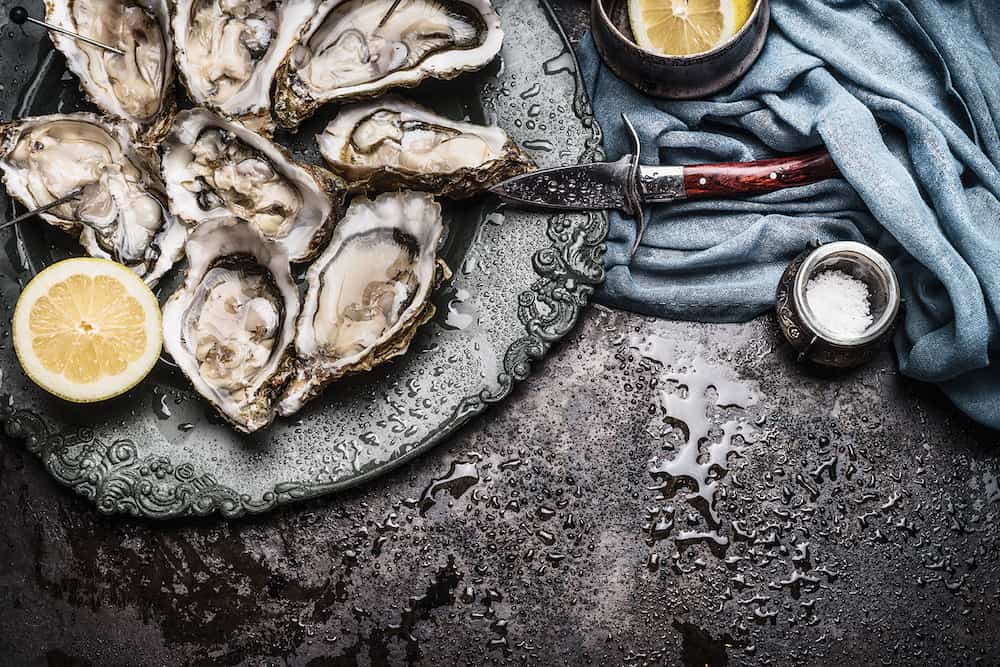
Fall and winter “R” no longer the only time to enjoy the briny bivalves
The seasonal rule of thumb concerning consumption of raw oysters has been around for at least 4,000 years, according to archaeologists at the Florida Museum of Natural History. By closely analyzing shells of parasitic snails found attached to discarded oyster shells lying in ancient middens around St. Catherines Island off the coast of Georgia, these scientists could determine that Native Americans only harvested oysters during months that contained the letter “R.”
Native Americans likely harvested oysters by hand from shallow waters, but only between what we now refer to as September through April. The evidence shows they avoided the R-less months of May, June, July, and August when the mollusks were busy breeding in the wild because, to eaters, oysters can seem watery and stringy after their sex organs get spent from spawning.
Around 1812, as colonists settled into this part of the world and commercial oyster dredging became commonplace, the “R” rule held muster because people wanted to avoid unpalatable oysters and food poisoning that could arise in summertime. The other factor governing the “R” rule is that higher instances of red tide exist in the summer months, indicating the presence of algae that is toxic to humans. As filter feeders, oysters living in red tide waters can bring this toxicity to those who consume them.
With the widespread adoption of oyster aquaculture, though, the rules have changed. “Today’s farmed oysters are spawned in hatcheries, iced as soon as they leave the water, and stay that way all the way to your plate,” says Rowen Jacobsen, in his 2016 book The Essential Oyster: A salty appreciation of taste and temptation.
Luckily for oyster fans, shellfish farming means they are always in season.
Dulse and Miso Butter Broiled Oysters
Ingredients
- 1/2 cup (1 stick) unsalted butter, room temperature
- 1 tablespoon shiro miso
- 1 tablespoon smoked dulse flakes
- 1 tablespoon lemon juice
- Rock salt
- 24 oysters, scrubbed
- 4 to 6 slices of crusty bread, for serving
Instructions
- Combine butter, miso, dulse, and lemon juice in the bowl of a stand mixer. Beat on high for 30 seconds. Scrape down the sides of the bowl. Beat for another minute.
- Heat broiler to high. Spread a thin layer of rock salt over the bottom of a 17- by 14-inch baking tray.
- Shuck oysters, nestling the cupped shell holding the oyster into the rock salt. Top each shucked oyster with about a teaspoon of the compound butter. Broil until butter has melted and is bubbling around the oyster, about 3 to 5 minutes.
- Transfer cooked oysters to serving plates with a piece of crusty bread to sop up any stray butter. Be careful, the shells will be very hot.




